That leave a lot of leeway to the commanders. I think of extreme examples as the Tonkin Gulf incident and the destruction of an Iranian airliner by USS Vincennes.Typically, ROEs forbid the USCG and USN from training weapons on these vessels as they pass in international waters, but will respond to direct threats against them.
You are using an out of date browser. It may not display this or other websites correctly.
You should upgrade or use an alternative browser.
You should upgrade or use an alternative browser.
Persian Gulf & Middle East Military News, Reports, Data, etc.
- Thread starter delft
- Start date
broadsword
Brigadier
Iron Dome Blunts 90% Of Enemy Rockets
Overall, Iron Dome missile deflection proves effective through 50 days of conflict
Sep 1, 2014 Alon Ben David | Aviation Week & Space Technology
Out of the Israelis’ conflict with Palestinians in the Gaza Strip, at least one success story has emerged: Israel’s Iron Dome counter-rocket system. With 735 interceptions of rockets and mortar bombs, Iron Dome demonstrated improved performance, scoring an almost 90% success rate.
Of 4,594 rockets and mortars fired from the Gaza Strip in 50 days of conflict, Iron Dome failed to intercept only 70 rockets where the system was deployed. One Israeli civilian was killed by a rocket, three other civilians and nine servicemen were killed by mortars, but there were no fatalities in the areas protected by the Iron Dome. The operational results appear to contrast with an ongoing academic debate in the U.S. about the system’s efficacy.
Iron Dome has intercepted more than 735 rockets and failed to catch 70 of them. Still, no casualties were reported in areas protected by the counter-rocket and mortar system. Credit: Zeev Stein
“This is an unprecedented and significant strategic achievement,” Israeli Defense Minister Moshe Ya’alon told Aviation Week. “Iron Dome almost negated Hamas’s [the Islamic Resistance Movement’s] medium- and long-range capabilities,” added a senior Israeli air force officer. “Those 735 rockets intercepted represent dozens of Israeli casualties whose lives were saved.”
Foreseeing the conflict, Israel deployed its six batteries of Iron Dome around urban centers in the days prior to launching its offensive into Gaza, dubbed “Operation Protective Edge,” on July 8. In the following days, Rafael Advanced Defense Systems, Iron Dome’s developer and main manufacturer, delivered three just-completed additional batteries. With nine batteries deployed and with thousands of intercepting missiles, Israel’s main cities were ready to meet the shower of rockets launched by Hamas and the Palestinian Islamic Jihad (PIJ) from Gaza. During the fighting, a 10th battery was delivered but not deployed, due to shortage of qualified staff.
On the Palestinian side, Hamas and PIJ amassed 9,000 rockets, mostly short-range 107-mm types. The arsenal includes about 1,000 122-mm rockets with a range of 45 km (28 mi.) and about 200 M75 8-in. rockets with a range of 75 km. The Palestinian forces also possess several dozen indigenous versions of Syrian 302-mm rockets, dubbed R160, with a range of more than 100 km.
Only a small part of that stockpile were standard serial-production rockets smuggled into Gaza from Egypt. Since the Egyptian army, headed by Abd Al-Fatah A-Sisi, took rule of the country in July 2013, Egypt has destroyed most of the smuggling tunnels dug from its territory into Gaza. As a result, the Palestinian militant organizations had to resort to improvised indigenous production of rockets and mortars.
Those improvised rockets demonstrated low accuracy and an unstable trajectory, sometimes confusing the operators of the Iron Dome, who intercept only the rockets threatening to strike populated areas. “We shortly realized we cannot trust the Palestinian rockets to perform a standard ballistic trajectory,” says Yossi Drucker, director for Air Superiority Systems at Rafael.
Out of the vast number of rockets fired, only 25% were effective and threatened to hit populated areas, a recurring ratio in previous conflicts with Gaza or Lebanon. That allowed Iron Dome to disregard most of the rockets. In most interceptions, a single “Tamir” interceptor was launched against each incoming rocket. In cases where the rockets were aimed at more densely populated areas, two interceptors were allocated, each with a cost of $50,000.
While Iron Dome could be operated in a fully automated mode, the air force has chosen to operate it in a man-in-the-loop mode, requiring the operators to decide within a few seconds whether and how to intercept. That policy proved to be effective, allowing most of Israel to maintain normal life with minimal interference. One operator’s error, however, disrupted international air traffic to Israel for up to a day and a half.
Throughout the conflict, Hamas made an effort to strike Israel’s Ben-Gurion International Airport. On July 22, as a rocket was fired at the airport, the Iron Dome operator decided not to intercept it, fearing that the interception might jeopardize civilian aircraft that were approaching for landing. The rocket landed 1 mi. away from the airport, and hours later the FAA ordered U.S. airlines to halt flights to Israel. A number of European airlines followed and canceled flights to Tel Aviv.
In response, Israel rushed to reassure American and European authorities that the rocket fire and Iron Dome activity posed a “negligible” threat to civil aviation. “Based on an [Israeli air force] study, the chance of an aircraft flying in Israeli airspace being hit by a random rocket fired from Gaza is one in a billion,” said Giora Rom, head of Israel’s Civil Aviation Authority (ICAA), in a letter sent to all international aviation authorities. In addition, ICAA has rerouted incoming and outgoing air traffic from Ben Gurion into corridors separated from the area where Iron Dome operates. All airlines resumed flights to Israel after 36 hr., with the exception of Korean Air.
“Without passing judgment on the Iron Dome operator’s decision, the system could have intercepted this rocket without posing any risk to air traffic,” says Drucker. “The system is designed to operate in the presence of air traffic. The chances of an Iron Dome interceptor hitting an aircraft are even smaller than the chances of an aircraft being hit by an incoming rocket.”
Iron Dome’s success against medium- and long-range rockets did not slacken Palestinians’ attempts to strike Israel. But as the Palestinians’ stockpile diminished, they started directing most of the fire against the villages bordering Gaza, where Iron Dome is not deployed. Even there, Iron Dome managed to intercept, for the first time, 10 mortar bombs fired at the town of Sderot.
While the success of Iron Dome was evident in the small number of losses and damage to the Israeli rear, some critics continue to claim that Iron Dome fails in most interception attempts. The most notable is Massachusetts Institute of Technology physicist Ted Postol, who presented a study claiming that Iron Dome succeeds in only 5% of interception attempts.
“These allegations are ludicrous,” says Uzi Rubin, former director of Israel’s Missile Defense Organization. “If it was true, how come that after 4,000 rockets fired at Israel there are no fatalities in the areas protected by Iron Dome? A similar number of rockets were fired by Hezbollah during the 2006 war in Lebanon—and then, without the Iron Dome, there were scores of Israeli casualties.”
The system received another vote of confidence in the U.S. Congress, which approved an additional $225 million funding for Iron Dome on Aug. 1. The budget is directed toward restocking Iron Dome interceptors and brings U.S. funding for the system to a total of $1.3 billion.
But there is also a curse in the Iron Dome’s success, as a senior defense source put it: “It creates an image where the Israeli side appears unharmed and makes it much harder to explain to the world why we fight.”
Overall, Iron Dome missile deflection proves effective through 50 days of conflict
Sep 1, 2014 Alon Ben David | Aviation Week & Space Technology
Out of the Israelis’ conflict with Palestinians in the Gaza Strip, at least one success story has emerged: Israel’s Iron Dome counter-rocket system. With 735 interceptions of rockets and mortar bombs, Iron Dome demonstrated improved performance, scoring an almost 90% success rate.
Of 4,594 rockets and mortars fired from the Gaza Strip in 50 days of conflict, Iron Dome failed to intercept only 70 rockets where the system was deployed. One Israeli civilian was killed by a rocket, three other civilians and nine servicemen were killed by mortars, but there were no fatalities in the areas protected by the Iron Dome. The operational results appear to contrast with an ongoing academic debate in the U.S. about the system’s efficacy.
Iron Dome has intercepted more than 735 rockets and failed to catch 70 of them. Still, no casualties were reported in areas protected by the counter-rocket and mortar system. Credit: Zeev Stein
“This is an unprecedented and significant strategic achievement,” Israeli Defense Minister Moshe Ya’alon told Aviation Week. “Iron Dome almost negated Hamas’s [the Islamic Resistance Movement’s] medium- and long-range capabilities,” added a senior Israeli air force officer. “Those 735 rockets intercepted represent dozens of Israeli casualties whose lives were saved.”
Foreseeing the conflict, Israel deployed its six batteries of Iron Dome around urban centers in the days prior to launching its offensive into Gaza, dubbed “Operation Protective Edge,” on July 8. In the following days, Rafael Advanced Defense Systems, Iron Dome’s developer and main manufacturer, delivered three just-completed additional batteries. With nine batteries deployed and with thousands of intercepting missiles, Israel’s main cities were ready to meet the shower of rockets launched by Hamas and the Palestinian Islamic Jihad (PIJ) from Gaza. During the fighting, a 10th battery was delivered but not deployed, due to shortage of qualified staff.
On the Palestinian side, Hamas and PIJ amassed 9,000 rockets, mostly short-range 107-mm types. The arsenal includes about 1,000 122-mm rockets with a range of 45 km (28 mi.) and about 200 M75 8-in. rockets with a range of 75 km. The Palestinian forces also possess several dozen indigenous versions of Syrian 302-mm rockets, dubbed R160, with a range of more than 100 km.
Only a small part of that stockpile were standard serial-production rockets smuggled into Gaza from Egypt. Since the Egyptian army, headed by Abd Al-Fatah A-Sisi, took rule of the country in July 2013, Egypt has destroyed most of the smuggling tunnels dug from its territory into Gaza. As a result, the Palestinian militant organizations had to resort to improvised indigenous production of rockets and mortars.
Those improvised rockets demonstrated low accuracy and an unstable trajectory, sometimes confusing the operators of the Iron Dome, who intercept only the rockets threatening to strike populated areas. “We shortly realized we cannot trust the Palestinian rockets to perform a standard ballistic trajectory,” says Yossi Drucker, director for Air Superiority Systems at Rafael.
Out of the vast number of rockets fired, only 25% were effective and threatened to hit populated areas, a recurring ratio in previous conflicts with Gaza or Lebanon. That allowed Iron Dome to disregard most of the rockets. In most interceptions, a single “Tamir” interceptor was launched against each incoming rocket. In cases where the rockets were aimed at more densely populated areas, two interceptors were allocated, each with a cost of $50,000.
While Iron Dome could be operated in a fully automated mode, the air force has chosen to operate it in a man-in-the-loop mode, requiring the operators to decide within a few seconds whether and how to intercept. That policy proved to be effective, allowing most of Israel to maintain normal life with minimal interference. One operator’s error, however, disrupted international air traffic to Israel for up to a day and a half.
Throughout the conflict, Hamas made an effort to strike Israel’s Ben-Gurion International Airport. On July 22, as a rocket was fired at the airport, the Iron Dome operator decided not to intercept it, fearing that the interception might jeopardize civilian aircraft that were approaching for landing. The rocket landed 1 mi. away from the airport, and hours later the FAA ordered U.S. airlines to halt flights to Israel. A number of European airlines followed and canceled flights to Tel Aviv.
In response, Israel rushed to reassure American and European authorities that the rocket fire and Iron Dome activity posed a “negligible” threat to civil aviation. “Based on an [Israeli air force] study, the chance of an aircraft flying in Israeli airspace being hit by a random rocket fired from Gaza is one in a billion,” said Giora Rom, head of Israel’s Civil Aviation Authority (ICAA), in a letter sent to all international aviation authorities. In addition, ICAA has rerouted incoming and outgoing air traffic from Ben Gurion into corridors separated from the area where Iron Dome operates. All airlines resumed flights to Israel after 36 hr., with the exception of Korean Air.
“Without passing judgment on the Iron Dome operator’s decision, the system could have intercepted this rocket without posing any risk to air traffic,” says Drucker. “The system is designed to operate in the presence of air traffic. The chances of an Iron Dome interceptor hitting an aircraft are even smaller than the chances of an aircraft being hit by an incoming rocket.”
Iron Dome’s success against medium- and long-range rockets did not slacken Palestinians’ attempts to strike Israel. But as the Palestinians’ stockpile diminished, they started directing most of the fire against the villages bordering Gaza, where Iron Dome is not deployed. Even there, Iron Dome managed to intercept, for the first time, 10 mortar bombs fired at the town of Sderot.
While the success of Iron Dome was evident in the small number of losses and damage to the Israeli rear, some critics continue to claim that Iron Dome fails in most interception attempts. The most notable is Massachusetts Institute of Technology physicist Ted Postol, who presented a study claiming that Iron Dome succeeds in only 5% of interception attempts.
“These allegations are ludicrous,” says Uzi Rubin, former director of Israel’s Missile Defense Organization. “If it was true, how come that after 4,000 rockets fired at Israel there are no fatalities in the areas protected by Iron Dome? A similar number of rockets were fired by Hezbollah during the 2006 war in Lebanon—and then, without the Iron Dome, there were scores of Israeli casualties.”
The system received another vote of confidence in the U.S. Congress, which approved an additional $225 million funding for Iron Dome on Aug. 1. The budget is directed toward restocking Iron Dome interceptors and brings U.S. funding for the system to a total of $1.3 billion.
But there is also a curse in the Iron Dome’s success, as a senior defense source put it: “It creates an image where the Israeli side appears unharmed and makes it much harder to explain to the world why we fight.”
asif iqbal
Banned Idiot
Has anyone else noticed this but the Algerian navy is becoming a hell of a navy
Check this for the procurements
2 x Kilo Class joining
2 x MEKO frigates
3 x Chinese frigates
2 x Russian corvettes
1 x amphibious assault ship from Italy based on the San Giorgio Class first for a Arab navy
This is a huge naval development should not be missed
Check this for the procurements
2 x Kilo Class joining
2 x MEKO frigates
3 x Chinese frigates
2 x Russian corvettes
1 x amphibious assault ship from Italy based on the San Giorgio Class first for a Arab navy
This is a huge naval development should not be missed
asif iqbal
Banned Idiot
Today marks another gigantic leap for the Turkish Navy with the launch of yet another RATSHIP
Wishing well to our Turkish friends for bringing this day into reality a making of a powerful navy right here
The ship today launched is the second of the two RATSHIP (Rescue and Towing Ship) Istanbul Shipyard is constructing for Turkish Navy.
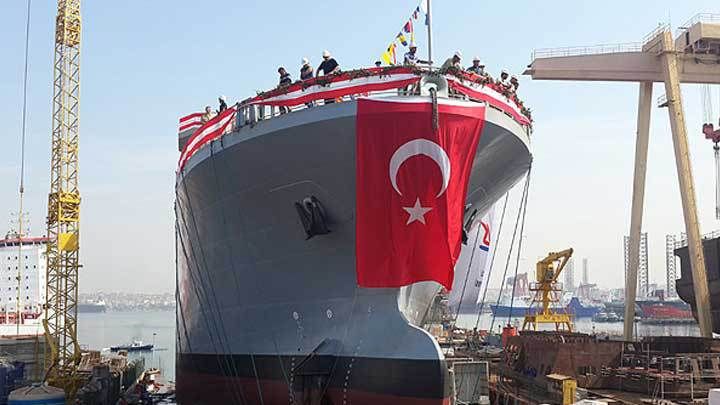
Wishing well to our Turkish friends for bringing this day into reality a making of a powerful navy right here
The ship today launched is the second of the two RATSHIP (Rescue and Towing Ship) Istanbul Shipyard is constructing for Turkish Navy.

Last edited:
asif iqbal
Banned Idiot
For those who are not the familiar with the Turkish navy
The contract was as follows
2 x RATSHIP and 1 x MOSHIP
RATSHIP
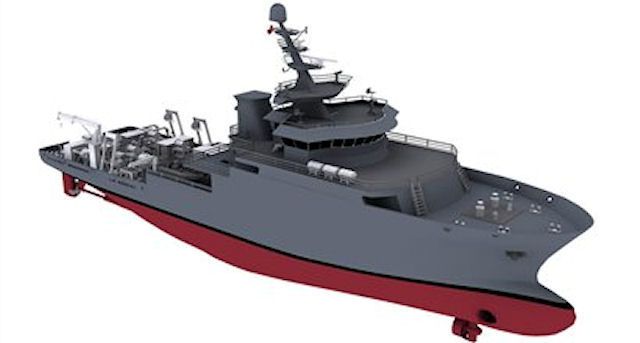
Both units launched
First ship A-583 TCG Insin on 25th June 2014
Second ship A-584 TCG Akin on 3rd September 2014
First unit
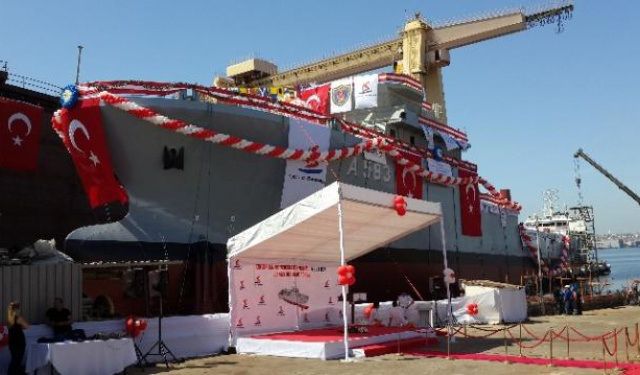
Second unit

MOSHIP
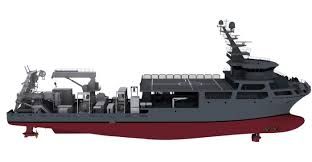
Single unit launched
A-601 TCG Alemdar 29th April 2014
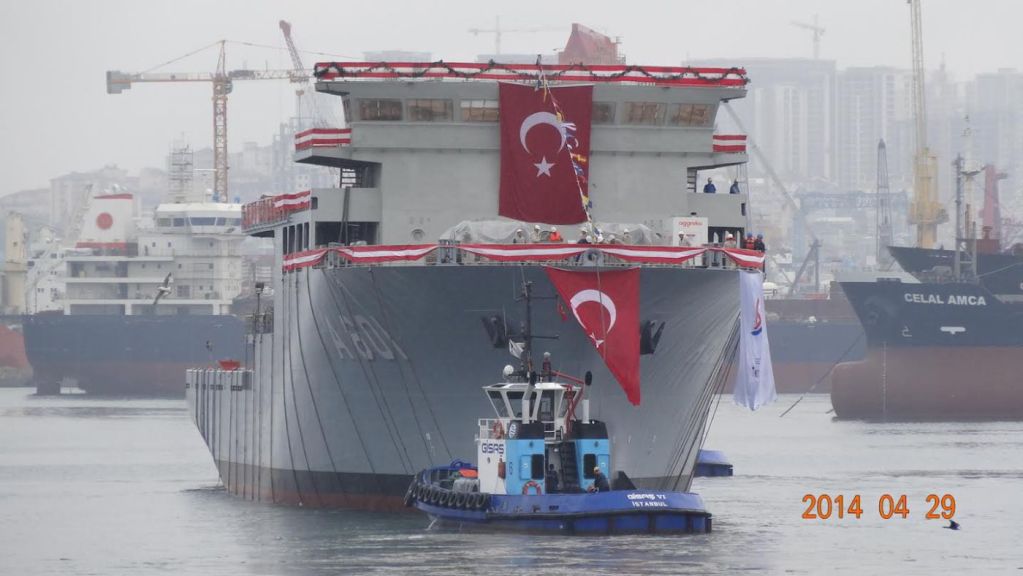
The contract was as follows
2 x RATSHIP and 1 x MOSHIP
RATSHIP

Both units launched
First ship A-583 TCG Insin on 25th June 2014
Second ship A-584 TCG Akin on 3rd September 2014
First unit

Second unit

MOSHIP

Single unit launched
A-601 TCG Alemdar 29th April 2014

Last edited:
asif iqbal
Banned Idiot
And to add the icing on the cake all 8 x LCT are commissioned and first steel for the 2 x LST has been cut launch is next year with the second in 2016
The contract has been signed for the LHD with the Canberra Class derivative
We can expect a fast and rapid lift capacity of the Turkish navy looking like this
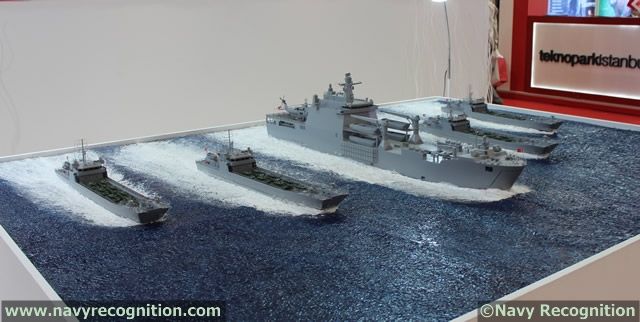
The contract has been signed for the LHD with the Canberra Class derivative
We can expect a fast and rapid lift capacity of the Turkish navy looking like this

Last edited:
asif iqbal
Banned Idiot
Ok uploaded the pics again from a new photobucket account hope you can see
TerraN_EmpirE
Tyrant King
The Thunder Turkey is coming.....
New Turkish Fighter Could Involve Overseas Companies
Sep. 9, 2014 - 10:44AM | By BURAK EGE BEKDIL |
FILED UNDER
World News
Europe
ANKARA — Turkey’s procurement administration has signaled it might rethink an ambitious indigenous fighter jet program, with a view to restructuring it and possibly adding foreign partners.
A senior procurement official said a recent reassessment of the program, dubbed TF-X, has indicated some “weaknesses” about the program.
The official did not detail those weaknesses but said there are questions regarding Turkey’s local capabilities and the technological feasibility of the project.
The potential changes come amid a major political reshuffling in Ankara.
On Aug. 10, Turkey’s powerful prime minister, Recep Tayyip Erdogan, was elected to the presidency. He took over Aug. 28 from incumbent President Abdullah Gul. Former Foreign Minister Ahmet Davutoglu was elected by party members to take over as prime minister.
In April, Erdogan appointed Ismail Demir, an aviation expert, as the country’s new top procurement official. Demir, head of the Undersecretariat for Defense Industries (SSM), is widely expected to remain in office after Davutoglu forms a new government.
An official from Tusas Turkish Aerospace Industries (TAI), potential maker of the TF-X, admitted that the SSM recently took a more cautious approach to the fighter jet program.
“[SSM] may restructure the program and seek a foreign partner or partners to maximize its financial and technological feasibility,” he said.
The program now awaits an official go-ahead from the government to move into the development phase. TAI is expecting to win a contract for development.
In an earlier pre-conceptual design phase, TAI designed three draft models, one of which would become the first Turkish indigenous fighter jet.
Industry sources expect Turkey’s top defense panel, the Defense Industry Executive Committee, to discuss the fighter program at its next meeting. Officials say a fall meeting is likely.
TAI worked with Sweden’s Saab for pre-conceptual design work. But the two companies did not agree to advance their cooperation. Saab produces the JAS 39 Gripen, a lightweight single-engine multirole fighter.
Industry sources said other foreign players, including Korea Aerospace Industries, could get involved in later stages.
Turkey was hoping that the indigenous TF-X would fly by 2023, the centennial of the republic.
Turkey also intends to buy scores of F-35s. After delays of more than a year, the Defense Industry Executive Committee in May officially decided to order the country’s first two F-35 joint strike fighters.
The order is for the first F-35A aircraft with Block-3F configuration under low-rate initial production lot 10. Turkey joined the multinational F-35 program as a consortium partner during the concept demonstration phase in 1999.
Turkey wants to eventually buy 100 F-35s.■
Geographer
Junior Member
What a tremendous waste of a money from a poor country. Algeria should spend that money on improving its schools, hospitals, and roads before buying a missile frigate and amphibious assault that will spend most of the year in harbor and the rest on expensive training missions. Algeria faces no naval threat and has no use for any of that hardware. There are far greater problems for the country.2 x Kilo Class joining
2 x MEKO frigates
3 x Chinese frigates
2 x Russian corvettes
1 x amphibious assault ship from Italy based on the San Giorgio Class first for a Arab navy
asif iqbal
Banned Idiot
What a tremendous waste of a money from a poor country. Algeria should spend that money on improving its schools, hospitals, and roads before buying a missile frigate and amphibious assault that will spend most of the year in harbor and the rest on expensive training missions. Algeria faces no naval threat and has no use for any of that hardware. There are far greater problems for the country.
Well that goes for any country which spends on it's military even in UK we have a declining NHS budget 100 ambulances have been take off the roads and walk in centres have been closed not to mention private Heath care company's are popping up like no tomorrow defeating the whole reason why NHS was established all those years ago why do we need two carriers??
Point is everyone has to spend on defence poor or rich
